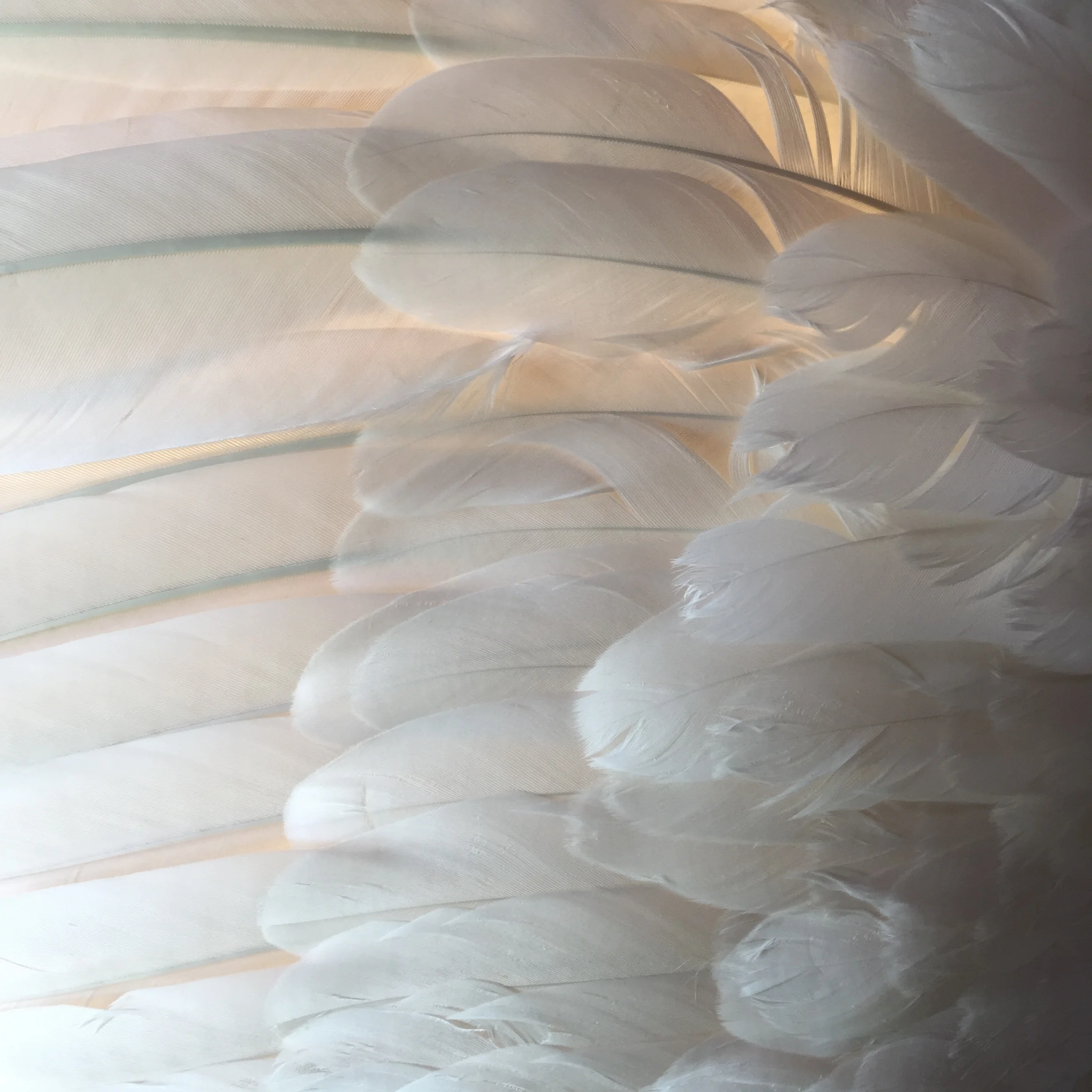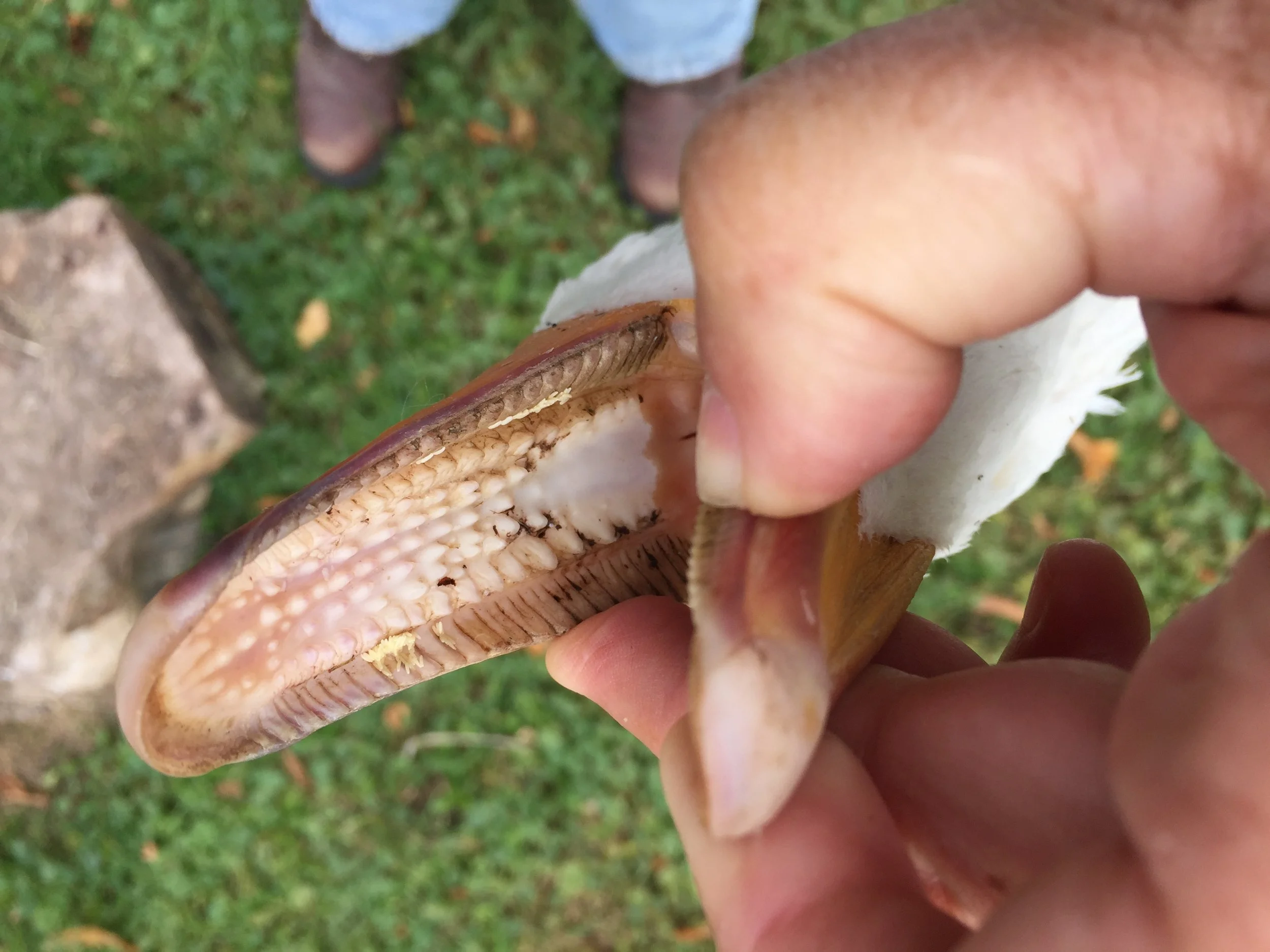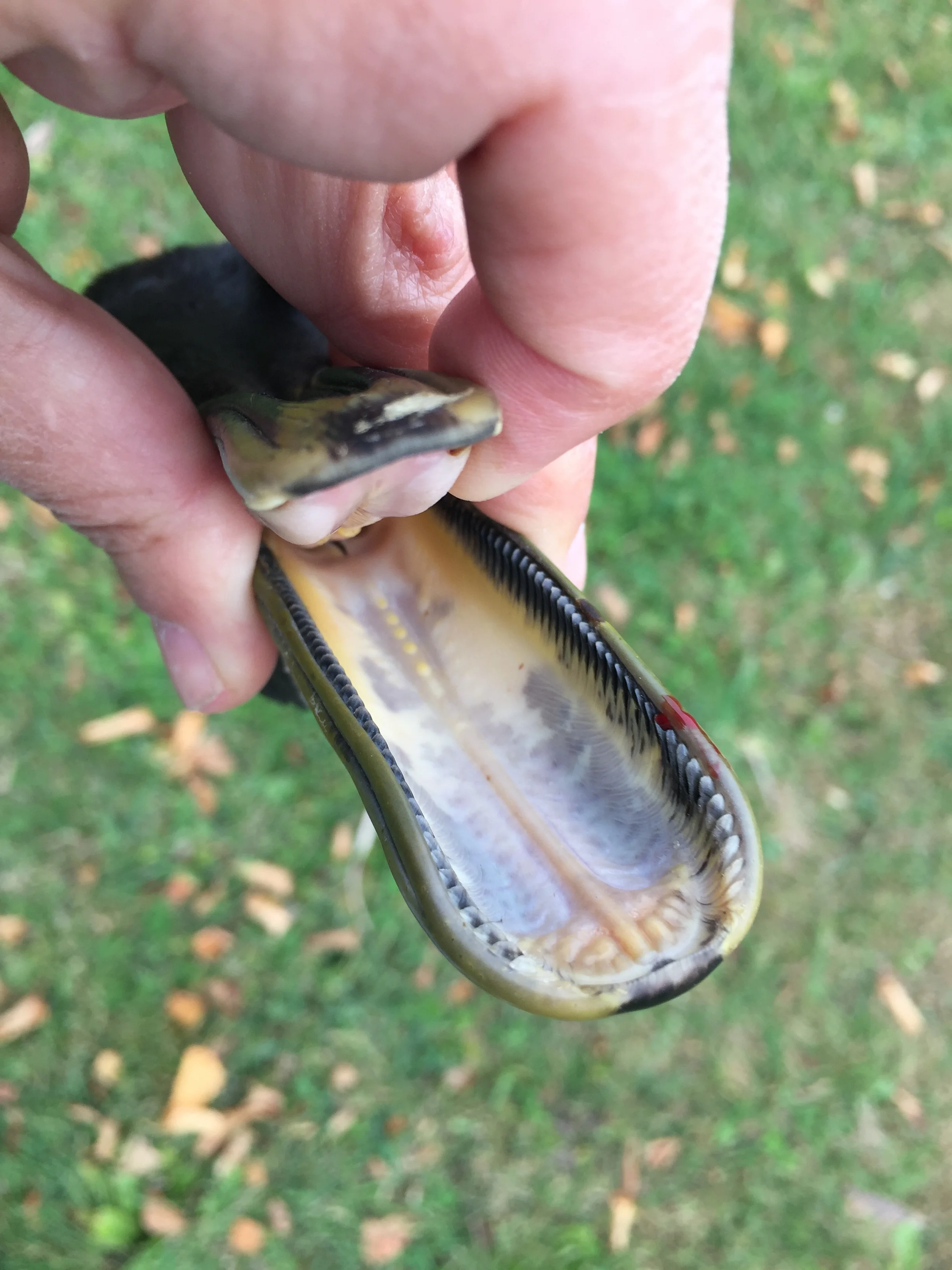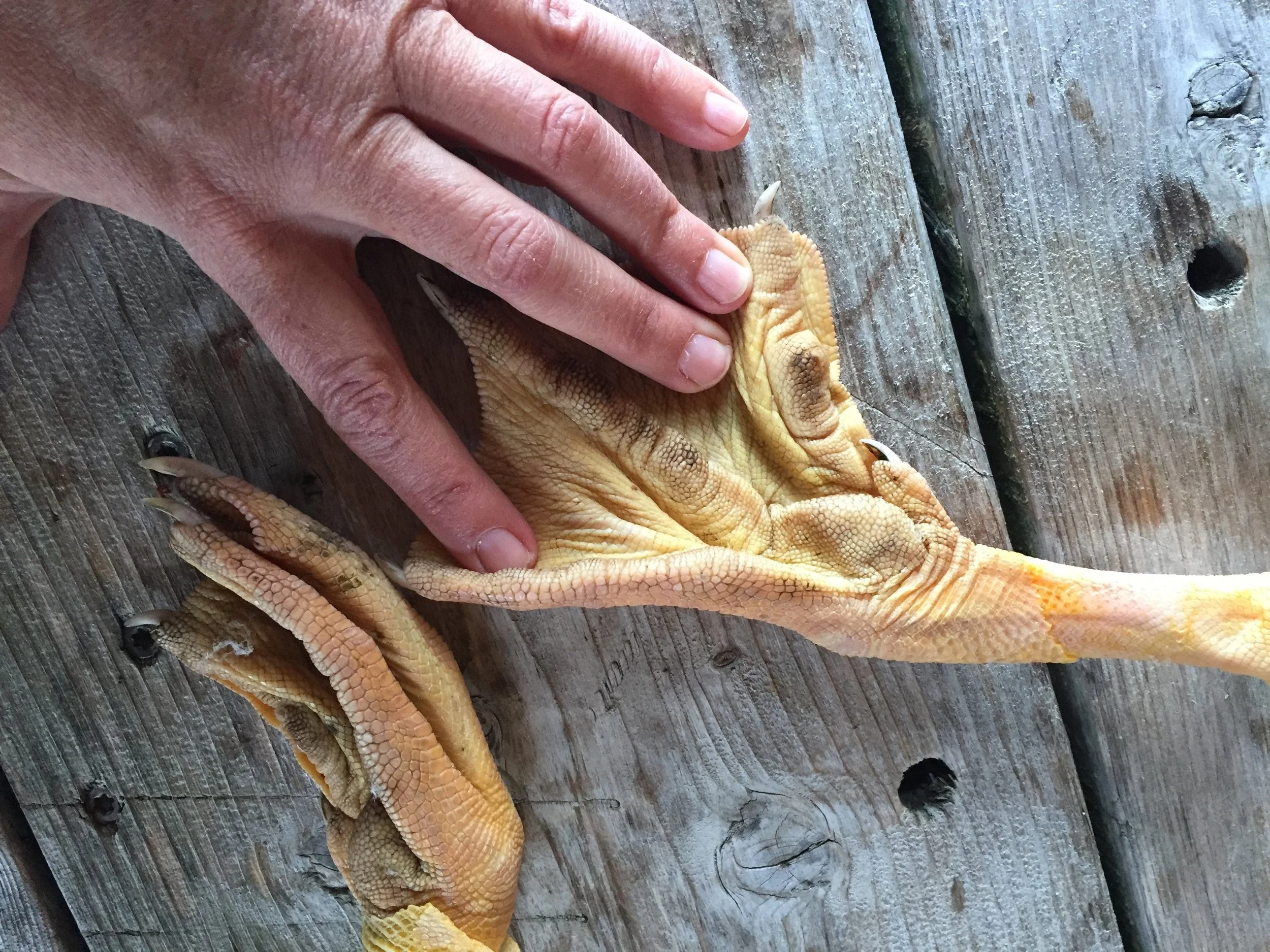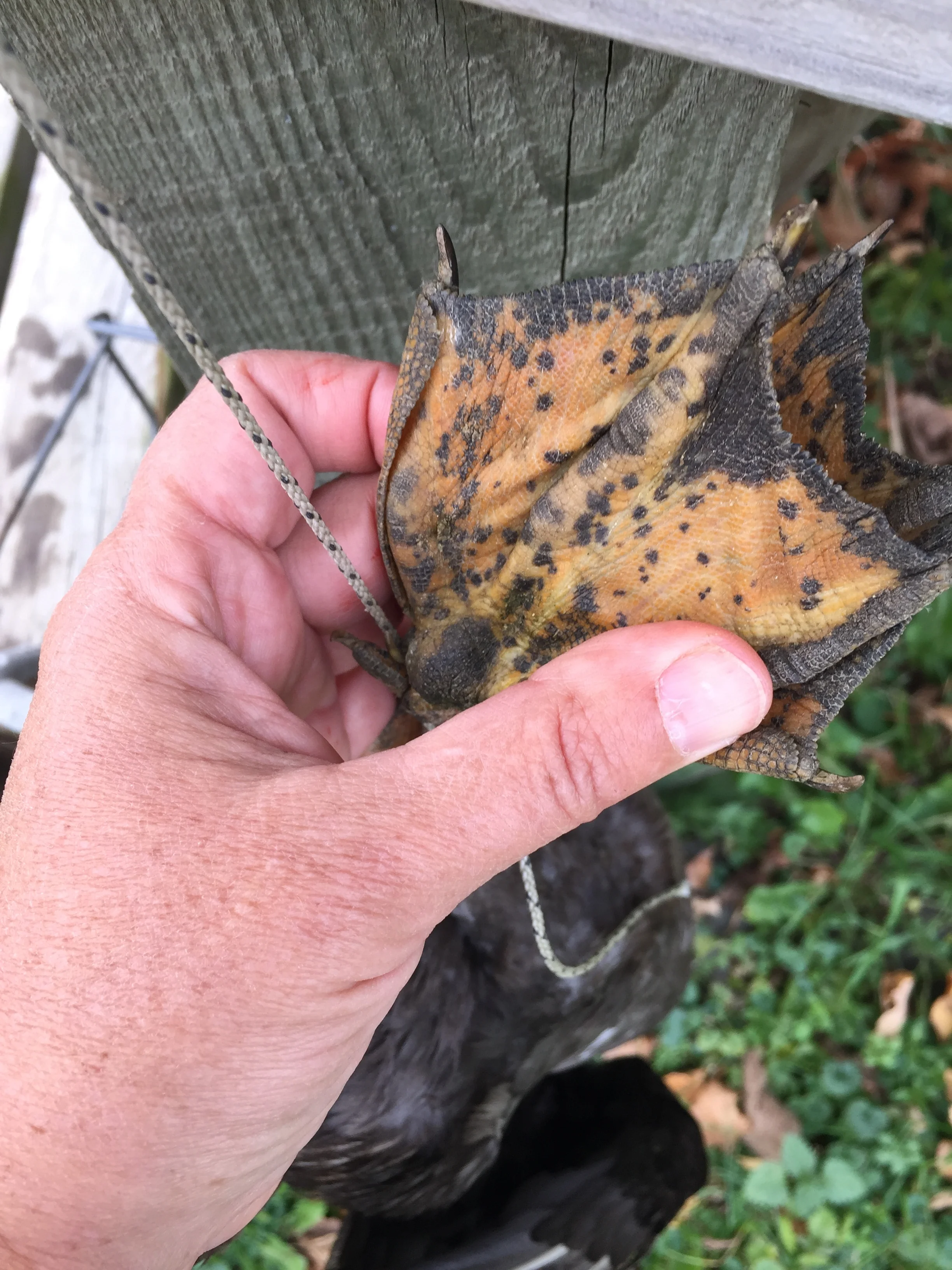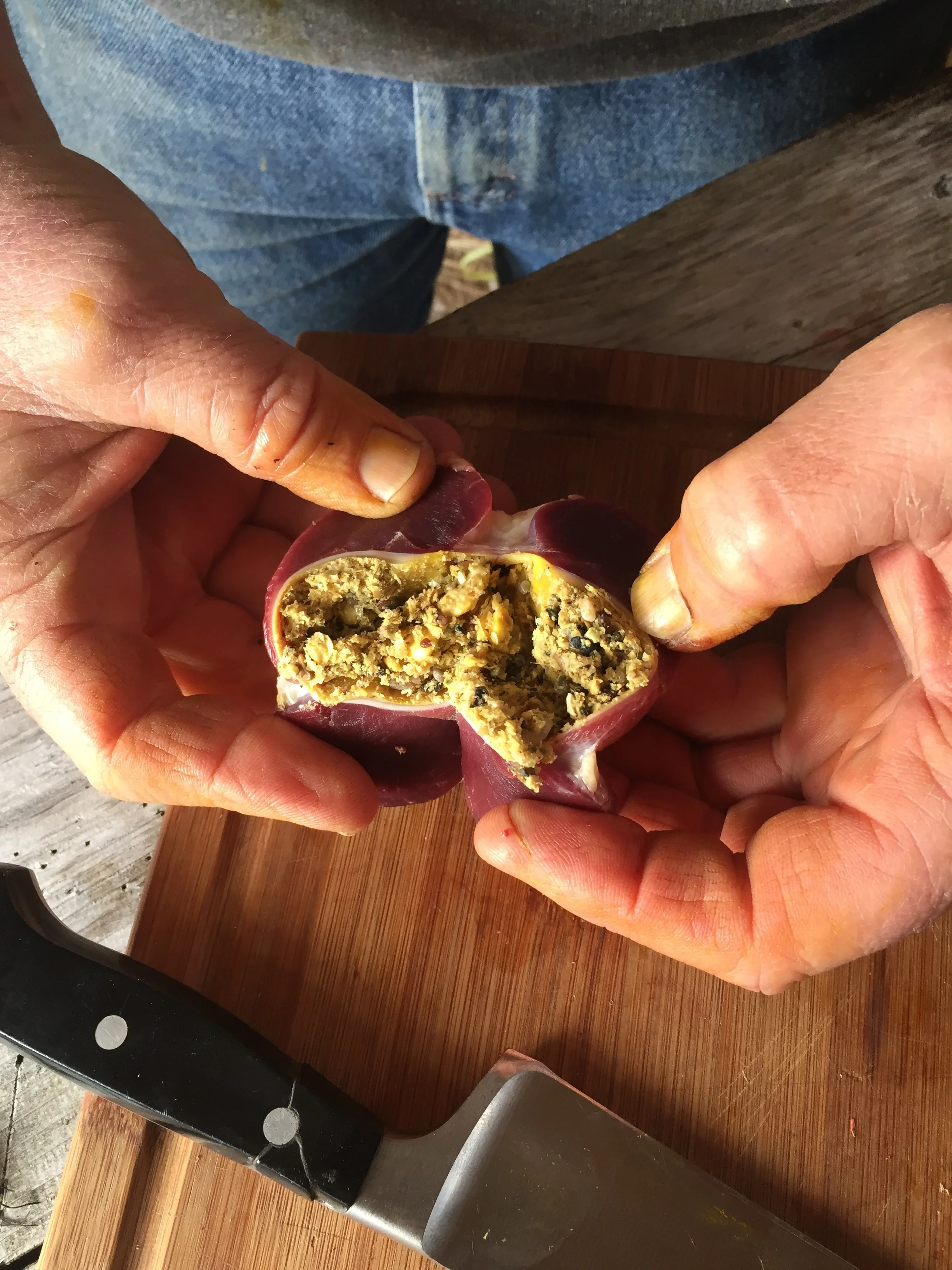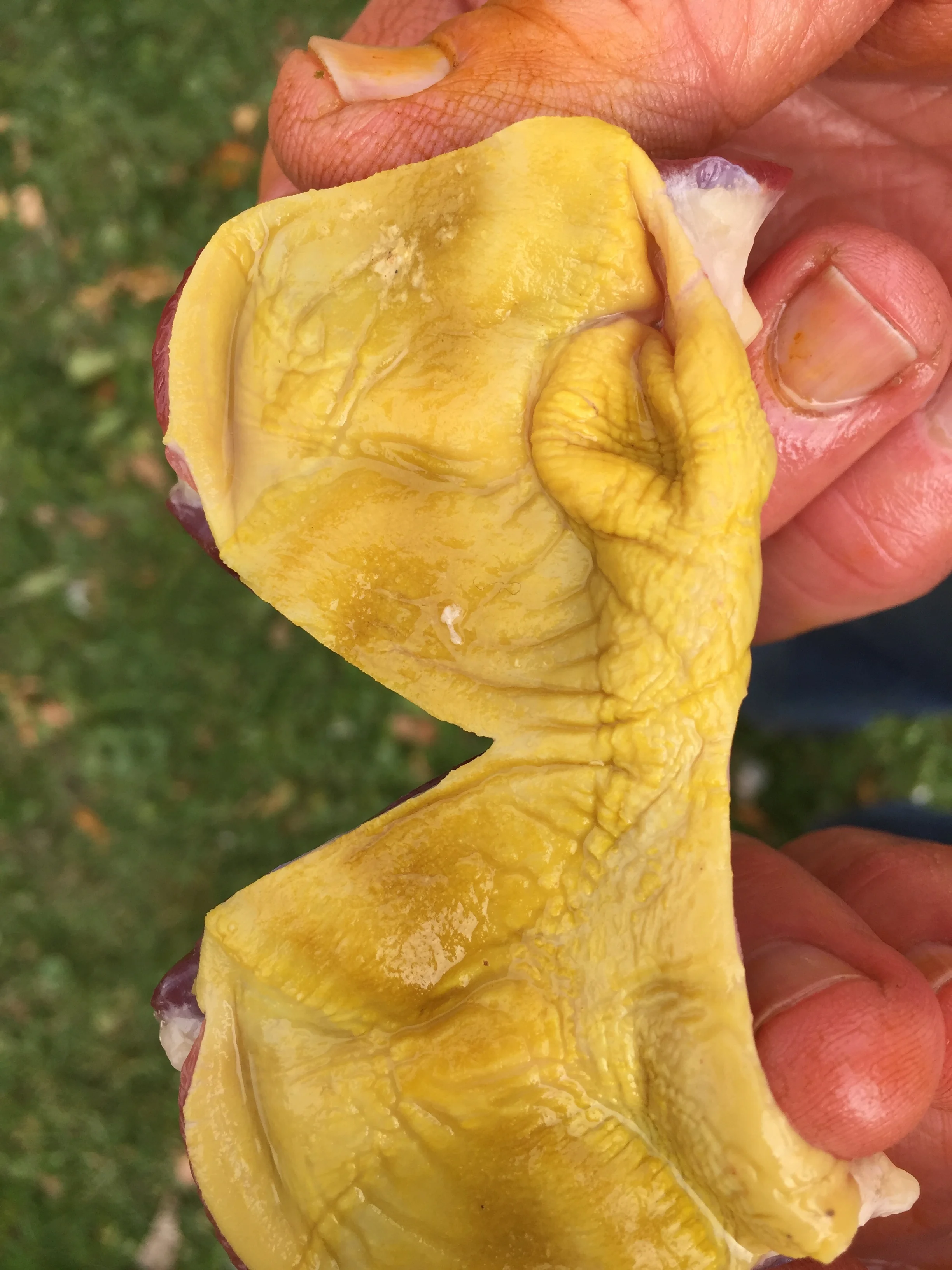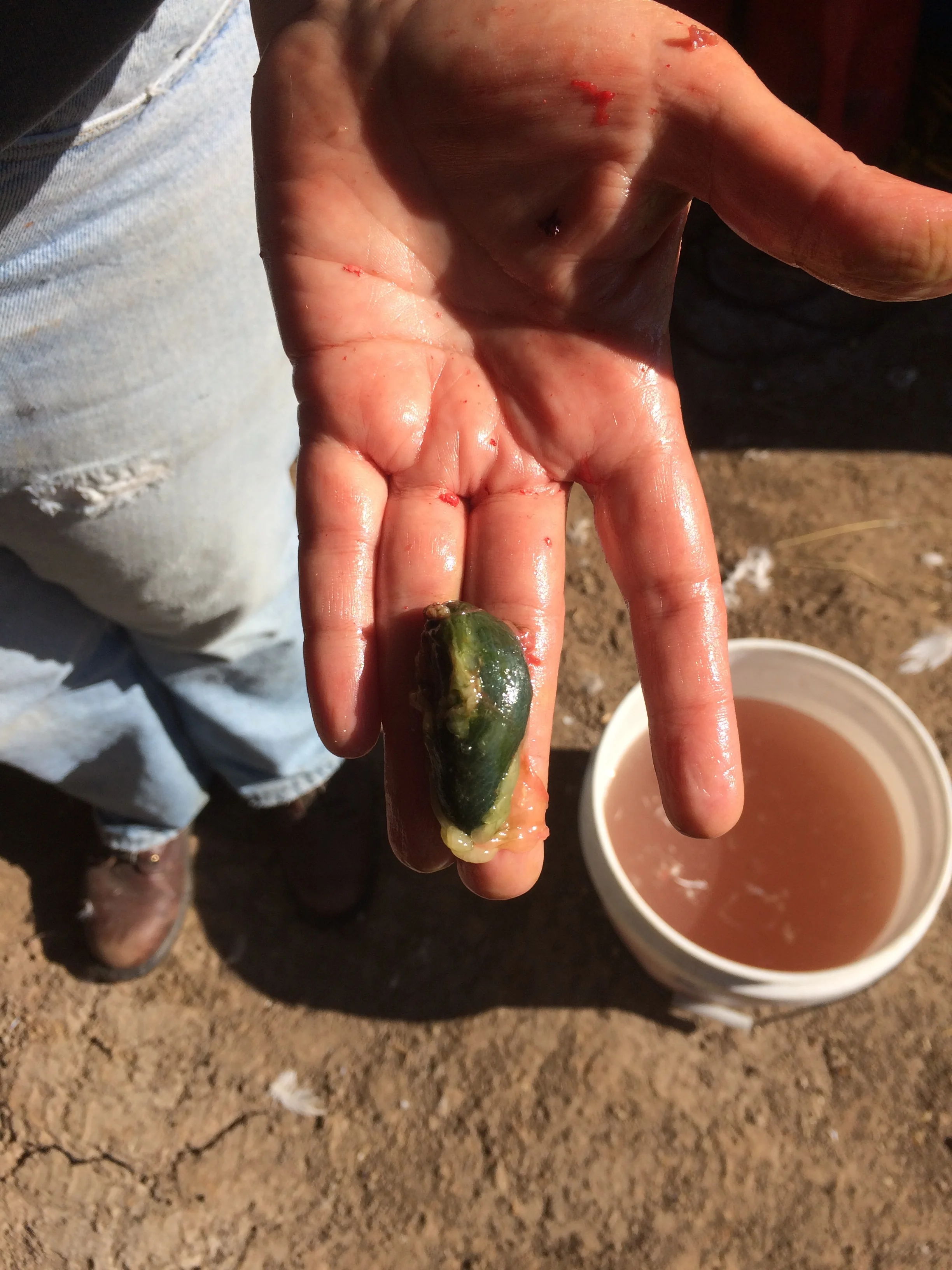Joy journal: all the “icky” parts
Michael and I recently harvested 5 geese and 3 ducks. It was hard work, and fabulous to do it together. Part of that fabulousness was sharing all the wonders of of the bodies of these birds who will nourish us and others. Some may consider some of this “icky,” so if you are one of those (not mentioning any names Katherine) stop reading now.
Feathers. I love feathers.
Starting with the least icky are the wings, how the feathers are layered, how they treat light. Fabulous.
Goose palate. Great for shearing grass.
Duck palate. Can shear grass but not as well as a goose.
Ducks, geese and chickens all eat grass, but geese derive about half of their calories from grass, more than ducks, and much more than chickens.
Their bodies reflect their diets.
Goose foot.
Duck foot.
Both ducks and geese have wonderful pads and, of course, webbing, but ducks have this extra flap and geese have extra padding. I have no idea why. I speculate that geese may be more terrestrial, but I really don’t know...but I’d like to find out.
Lungs and fat (the fat is in the background).
Goose lungs look much like duck lungs, only larger. The fascinating thing about geese is the amount of fat they have. Fat, like a lung, is an organ. It has its own blood supply and gets the goose through winter, when grass is scarce.
Corn and grit.
The gizzard is where geese, ducks and chickens grind their food before they digest it. They use rocks and grit in a very muscular organ to break down their carbs to a useable form.
Cleaned gizzard
The inside of a gizzard is covered with an amazing thick covering that can withstand the abrasiveness of the grit, but can expand and contract with the quantity of food available. You never get to see this covering in the giblets provided with processed birds, as it is inedible. But it is Fabulous!
Not a duck or goose, but fascinating all the same. She found her feet!!! Fabulous!
This green jewel is a gall bladder.
We eat livers, but in order to make them edible, they have to be separated from the gall bladders, which work with the livers to digest fats. Gall is bitter, so the trick is to keep the bladder intact. Then the livers are...
Duck tales and other stories
Apropos of the end, a story of tails. Drakes develope curly tails, but ganders do not. None of our ganders were sexually mature upon harvest, but the ducks were. We will have to figure out how to separate the ganders from the geese once we have winter quarters for geese. And that is all the fabulous photos I have for today.
